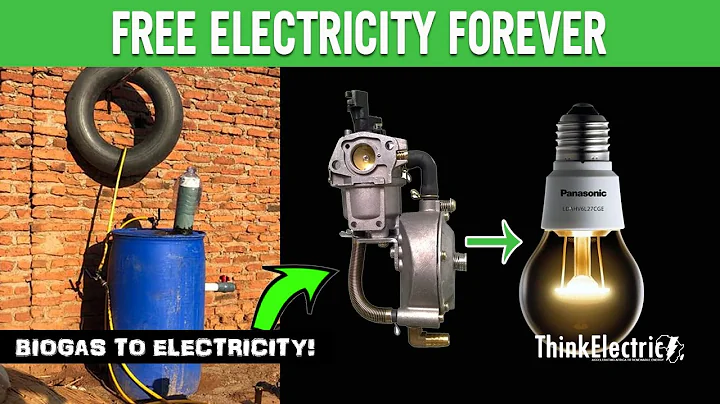Quick and Easy Alternator Testing
Table of Contents
- Introduction
- Checking the Battery
a. Using a Voltmeter
b. Symptoms of a Bad Battery
- Testing the Alternator
a. Checking the Voltage Rise
b. Proper Charging Voltage Range
- Troubleshooting Alternator Issues
a. Checking the Alternator Output
b. Testing for a Bad Fuse
- Other Potential Alternator Problems
a. Broken or Missing Belt
b. Loose Connections
- Checking the Ground Side
a. Performing a Voltage Drop Test
b. Addressing Ground Issues
- Conducting a Voltage Drop Test
a. Confirming Continuity
b. Identifying Voltage Drops
- Conclusion
How to Test Your Alternator
In this article, I will guide you through the process of testing your alternator to identify any problems you may be experiencing with your electrical system. It can be challenging to determine whether the issue lies with your battery or alternator, but with the right techniques, you can pinpoint the root cause.
1. Introduction
When your vehicle's electrical system starts acting up, it's crucial to determine whether the problem stems from a faulty alternator or a weak battery. Testing your alternator is a straightforward process that requires a few tools and basic knowledge of your vehicle's charging system.
2. Checking the Battery
Before diving into testing your alternator, it's essential to verify that your battery is in good condition. The following steps will guide you on how to check your battery using a voltmeter and identify common symptoms of a bad battery.
a. Using a Voltmeter
To ensure the accuracy of the alternator test, make sure your battery has a minimum of 12 volts. Using a voltmeter with the DC voltage setting, turn the meter to 2 volts. A fully charged battery should read around 12.6 volts. If your battery's voltage is lower, it may indicate a weak battery or a problem with the charging system.
b. Symptoms of a Bad Battery
If you're experiencing a battery light on your dashboard, dim headlights, slow cranking, or a sudden vehicle shutdown while driving, it could be signs of a bad battery. These symptoms are often associated with either a weak battery or a faulty alternator.
3. Testing the Alternator
Once you've confirmed that your battery is in good condition, you can proceed with testing your alternator. The following steps will guide you on how to check the voltage rise and determine the proper charging voltage range.
a. Checking the Voltage Rise
Start your engine and observe the voltage reading on your voltmeter. Ideally, the voltage should rise from 12 volts to anywhere between 13 and 14.6 volts. Any reading below 13 volts may suggest a weak battery or a failing alternator, requiring further diagnosis. On the other hand, if the voltage exceeds 14.6 volts, the alternator may be overcharging the battery, potentially causing damage.
b. Proper Charging Voltage Range
Modern alternators typically have a built-in voltage regulator to keep the voltage below 14.6 volts. If your alternator consistently goes above this range, it could indicate a faulty voltage regulator. Monitoring the charging voltage is crucial in maintaining a healthy battery and alternator.
4. Troubleshooting Alternator Issues
If your alternator is not providing the proper charging voltage, there are a few troubleshooting steps you can take. Firstly, check the alternator output by using a test lead of your voltmeter to measure the voltage at the back of the alternator. You should see a reading of 13 to 14 volts. Anything lower suggests a bad alternator or a blown fuse for the alternator.
b. Testing for a Bad Fuse
In some instances, a misdiagnosed alternator issue may be traced back to a blown fuse. Check for a fuse that connects the small wire that excites the alternator. If the fuse is broken, replacing it may resolve the charging issue. Therefore, always inspect the fuse before assuming that the alternator is at fault.
5. Other Potential Alternator Problems
In addition to testing the alternator output and fuses, there are a few other potential issues to consider. One common problem is a broken or missing belt that drives the alternator. Without a functioning belt, the alternator cannot spin and charge the battery, resulting in a vehicle running solely on battery power.
Another often overlooked issue is loose connections. During battery replacement, it's crucial to ensure that all connections are tightened correctly. Loose or corroded connections can prevent the alternator from charging the battery effectively, leading to various electrical problems.
6. Checking the Ground Side
The ground side of the alternator plays a crucial role in its operation. Performing a voltage drop test can help identify any ground-related issues that may affect charging voltage. Follow these steps to check the voltage drop on the ground side of your alternator.
a. Performing a Voltage Drop Test
Using your voltmeter, connect the positive lead to the positive side of the battery and the ground lead to the case of the alternator. A properly grounded alternator should show no voltage or a minimal reading of around 0.3 volts. If the voltage reading exceeds this range, you may have a ground issue that needs to be addressed.
b. Addressing Ground Issues
To address ground issues, check all your cables and body grounds. You may also want to test the voltage drop from the engine block to the battery and the alternator to ensure proper continuity. A faulty ground connection can cause the alternator to underperform or fail to deliver the proper charging voltage.
7. Conducting a Voltage Drop Test
To ensure the continuity of your battery cable and proper voltage supply, perform a voltage drop test. This test will help identify any breaks in voltage within your battery cable.
a. Confirming Continuity
Reconnect your voltmeter to the positive side of the battery and the stud on the back of the alternator. A successful test will show minimal to no voltage reading. However, if the voltmeter displays anything above 0.2 millivolts, it indicates a break in voltage, requiring further examination and potential cable replacement.
b. Identifying Voltage Drops
A voltage drop within your battery cable can hinder the alternator's ability to deliver the necessary charging voltage. By identifying and addressing these voltage drops, you can ensure the efficiency and performance of your alternator.
8. Conclusion
Testing your alternator is a crucial step in troubleshooting electrical issues with your vehicle. By following the steps outlined in this guide, you can easily assess the health of your alternator, battery, and various connections within the charging system. If you're uncertain about any aspect of the testing process, it's always recommended to seek professional assistance to ensure accurate diagnosis and maintenance.
Highlights
- Learn how to test your alternator to identify electrical system problems.
- Check the battery voltage and symptoms of a bad battery.
- Test the alternator's voltage rise and proper charging voltage range.
- Troubleshoot alternator issues, including checking the output and fuses.
- Address potential problems like broken belts and loose connections.
- Perform a voltage drop test to assess the ground side and cable continuity.
FAQ
Q: How do I know if my alternator is faulty or if it's a battery issue?
A: Testing your alternator and checking the battery voltage can help determine the source of the problem. If the battery is in good condition but the alternator fails to provide proper charging voltage, it's likely a faulty alternator.
Q: Can a blown fuse cause alternator issues?
A: Yes, a blown fuse can prevent the alternator from charging the battery. Always check the fuse connecting the small wire that excites the alternator before assuming a faulty alternator.
Q: What are the common symptoms of a bad alternator?
A: Some common symptoms include a battery light on the dashboard, dim headlights, slow cranking, and a sudden vehicle shutdown while driving. These signs indicate potential alternator issues that require further diagnosis.
Q: Can loose connections affect the alternator's performance?
A: Yes, loose connections can hinder the alternator's ability to charge the battery properly. Always ensure that all connections are tightened securely during battery replacement or maintenance.
Q: When should I seek professional help for alternator testing?
A: If you're unsure about the testing process or need a comprehensive diagnosis, it's recommended to seek professional assistance. They have the tools and expertise to accurately assess alternator problems and ensure effective maintenance.
 WHY YOU SHOULD CHOOSE SaasVideoReviews
WHY YOU SHOULD CHOOSE SaasVideoReviews







